The comparison of canine and human visual capabilities in low-light conditions raises intriguing questions about the extent of dogs' superiority in the dark. While humans rely heavily on artificial lighting to aid their vision at night, canines seem to possess innate adaptations that allow them to navigate dimly lit environments with remarkable ease.
The intricate interplay between a dog's ocular anatomy and its evolutionary adaptations hints at a fascinating realm of visual acuity that surpasses human comprehension. Could dogs truly see in the dark better than humans can? The answer lies in the complex mechanisms that underpin their exceptional night vision abilities, inviting a deeper exploration into the realms of canine visual perception.
Key Takeaways
- Dogs have superior night vision capabilities compared to humans.
- They possess more rods in their retinas for better low-light vision.
- Larger pupils and the tapetum lucidum enhance dogs' ability to see in the dark.
- Dogs compensate for their lack of binocular vision with heightened senses of smell and hearing.
Dog's Retinal Composition
With a higher concentration of rods than cones in their retinas, dogs possess enhanced night vision capabilities due to their unique retinal composition. Rods are photoreceptor cells that excel at detecting low light levels, movement, and shapes, making them crucial for night vision.
This abundance of rods allows dogs to see in light conditions that are five times dimmer than what humans require. Additionally, dogs have larger pupils that can dilate more widely, enabling them to capture more light and enhance their vision in the dark.
This specialized retinal structure equips dogs with superior night vision compared to humans, making them well-adapted for activities in low-light environments such as hunting or navigating during the night.
Enhanced Night Vision Abilities
Due to their unique retinal composition with a higher concentration of rods than cones, dogs possess exceptional night vision capabilities that enable them to excel in low-light environments. Dogs' enhanced night vision abilities are attributed to factors such as having more rods in their retinas, allowing them to see in light conditions five times dimmer than humans. Their larger pupils capture more light, aiding in improved vision at night. Additionally, the tapetum lucidum in their eyes reflects light, further enhancing their vision in the dark. To illustrate these features, the table below summarizes key points about dogs' superior night vision abilities:
| Night Vision Features | Description |
|---|---|
| More Rods in Retinas | Aid in seeing in dim light conditions |
| Larger Pupils | Capture more light for better night vision |
| Tapetum Lucidum Presence | Reflects light, improving vision in low light |
| Enhanced Motion Tracking | Ability to track movement effectively at night |
| Increased Sensitivity | Can detect subtle movements in darkness |
Comparison to Human Vision
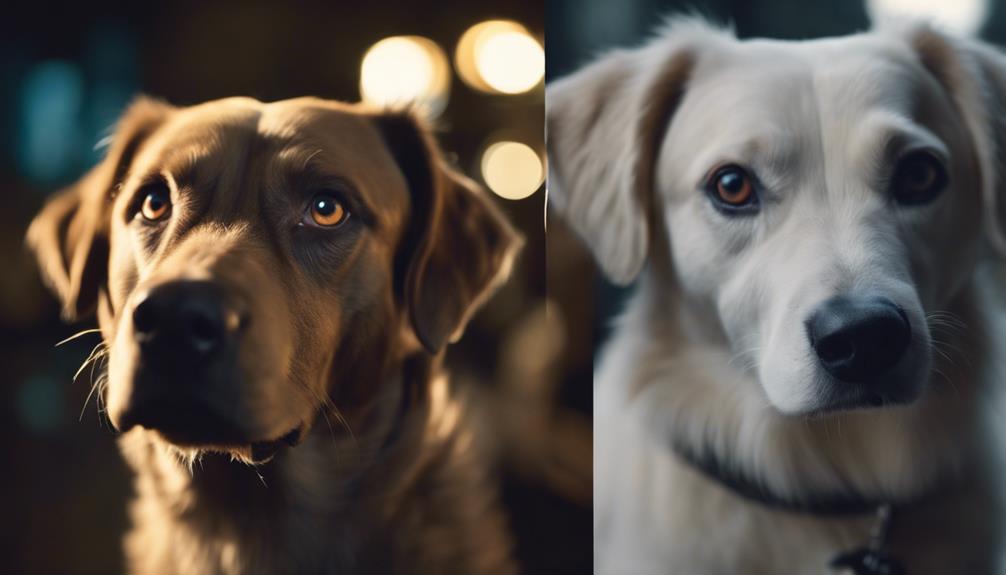
In comparing dogs' visual abilities to human vision, it becomes evident that dogs' superior night vision capabilities stem from their unique retinal composition and anatomical features.
Dogs have a higher concentration of rods, specialized photoreceptor cells, in their retinas compared to cones, which are responsible for color vision and detailed daylight vision. This abundance of rods allows dogs to detect motion and see in low-light conditions more effectively than humans.
Additionally, dogs possess larger pupils that can dilate widely, enabling more light to enter the eye and enhancing their night vision further. While humans have a higher concentration of cones, providing better color vision and visual acuity during the day, dogs excel in detecting movement and navigating in dimly lit environments.
Pupils and Light Capture
Notably, the size and dilation capability of a dog's pupils play a crucial role in capturing light and enhancing their vision in low-light environments.
- Larger Pupils: Dogs possess larger pupils compared to humans, allowing more light to enter the eye.
- Increased Light Capture: The larger pupils enable dogs to capture more light, aiding in improved night vision.
- Enhanced Sensitivity: Dogs' pupils can dilate significantly, enhancing their sensitivity to low light conditions.
- Quick Adaptation: Dog pupils can adjust rapidly to changing light conditions, facilitating quick adaptation to varying levels of brightness.
Binocular Vision Vs. Peripheral Vision
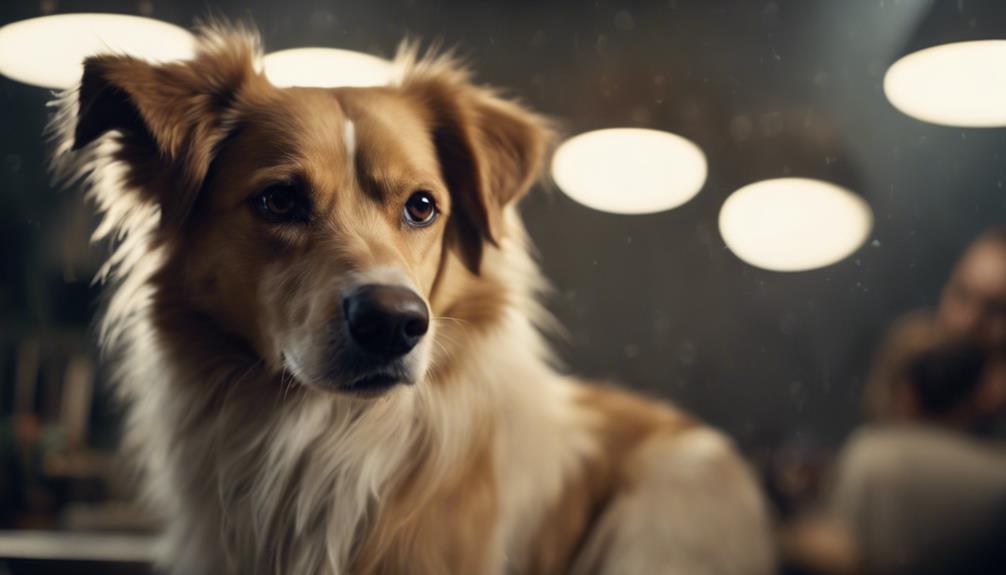
The difference in visual capabilities between dogs and humans becomes evident when comparing their binocular vision to peripheral vision. Humans have binocular vision, where both eyes work together to create a single, focused image, providing depth perception and enhancing visual acuity.
In contrast, dogs lack this binocular vision but excel in peripheral vision. Dogs have a wider field of view, allowing them to detect movement and objects in their surroundings more effectively than humans. This peripheral vision aids dogs in activities like hunting or detecting potential threats.
While humans rely on binocular vision for tasks that require depth perception, dogs rely on their exceptional peripheral vision to navigate their environment and excel in low-light conditions.
Impact of Tapetum Lucidum
The Tapetum Lucidum in dogs plays a crucial role in enhancing their night vision capabilities and overall visual acuity.
- Tapetum Lucidum reflects light, giving dogs a 'second chance' to see in low-light conditions.
- It increases light sensitivity, aiding in detecting movement and objects in the dark.
- The reflective layer enhances contrast, helping dogs distinguish objects against dark backgrounds.
- The tapetum lucidum contributes to the glowing eyes effect seen in dogs at night.
Understanding the impact of the tapetum lucidum sheds light on why dogs excel in low-light environments, giving them a unique advantage over humans in the dark.
Degeneration and Cataracts in Breeds
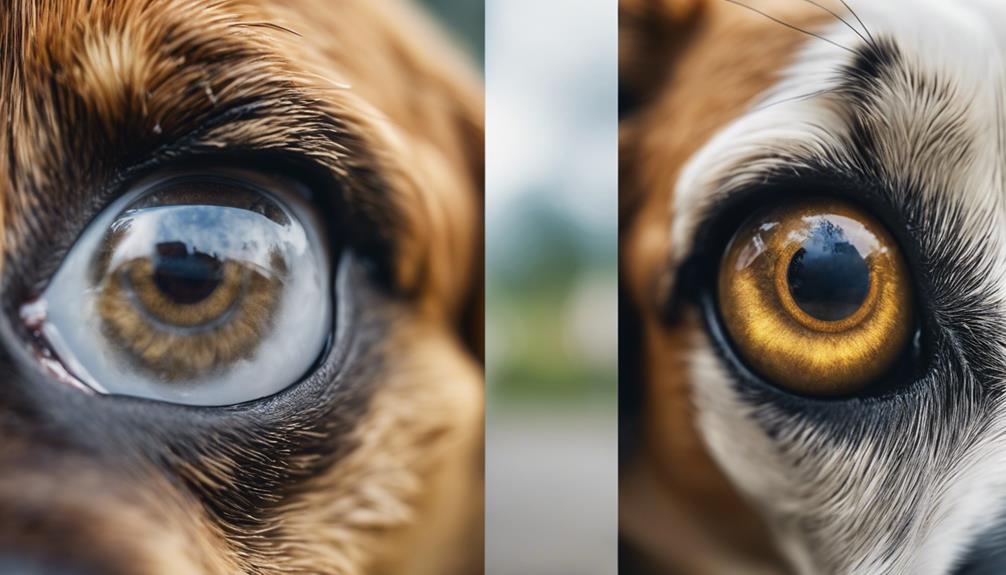
Degeneration and cataracts in certain dog breeds can impact their visual acuity and overall eye health. Some breeds are prone to developing these conditions as they age, affecting their ability to see clearly. Regular eye check-ups are crucial for detecting these issues early on and managing them effectively. Below is a table highlighting some breeds that are more susceptible to degeneration and cataracts:
| Breed | Degeneration Susceptibility | Cataracts Susceptibility |
|---|---|---|
| Labrador Retriever | High | Low |
| Poodle | Medium | High |
| Siberian Husky | Low | Medium |
| Boxer | High | Medium |
Average Visual Acuity in Dogs
Certain dog breeds exhibit varying levels of visual acuity, which plays a significant role in their overall eye health and ability to navigate their surroundings effectively.
Visual acuity can vary among dog breeds, affecting their ability to see details clearly.
Dogs have an average visual acuity of 20/75, which is less sharp than that of humans.
Some breeds may have better visual acuity for specific tasks, such as hunting or tracking.
Understanding a dog's visual acuity can help in tailoring their environment and activities to suit their vision capabilities.
Senses Compensating for Vision
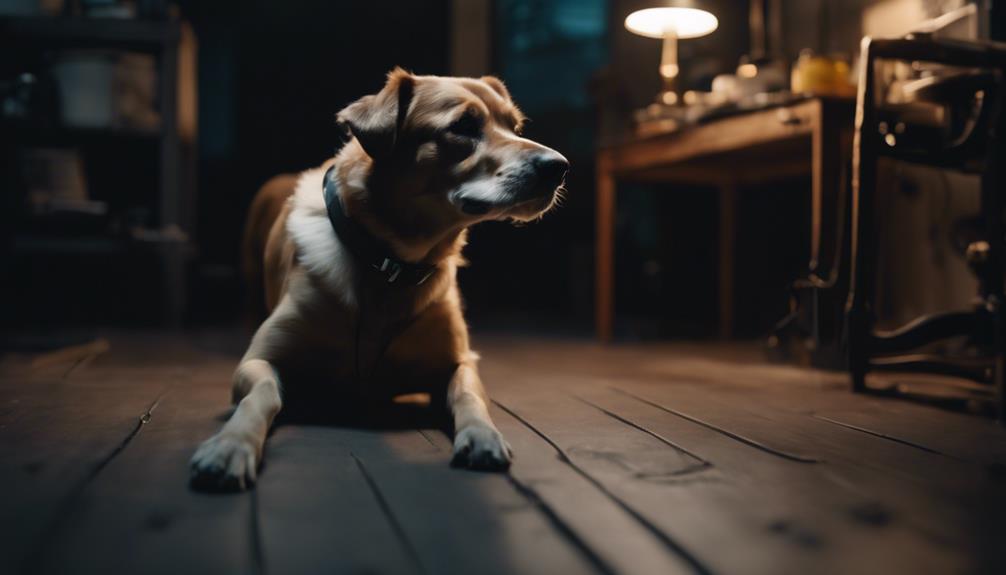
While dogs may have limitations in their vision compared to humans, their other senses play a crucial role in compensating for any visual deficiencies. Dogs heavily rely on their exceptional sense of smell, which is estimated to be tens of thousands of times more sensitive than humans'. This heightened olfactory ability allows dogs to navigate their surroundings, identify objects, and even detect potential dangers in the dark.
Additionally, dogs possess remarkable hearing capabilities, enabling them to pick up subtle sounds and movements that may go unnoticed by humans. By utilizing their acute sense of smell and hearing, dogs can effectively compensate for their reduced visual acuity, showcasing their remarkable adaptability and survival instincts in low-light conditions.
Challenges in Improving Night Vision
Despite the remarkable compensatory abilities of dogs using their sense of smell and hearing, enhancing their night vision presents significant challenges due to inherent physiological limitations. To improve a dog's night vision, several obstacles must be overcome:
- Dogs have a limited number of rods and cones in their retinas, impacting their ability to see in low-light conditions.
- The tapetum lucidum, while aiding in night vision, can also cause visual distortion and sensitivity to light.
- Dogs lack the ability for acute focus at varying distances, affecting their overall night vision capabilities.
- Genetic predispositions to eye conditions such as cataracts can further hinder efforts to enhance a dog's night vision.
Importance of Balanced Diet
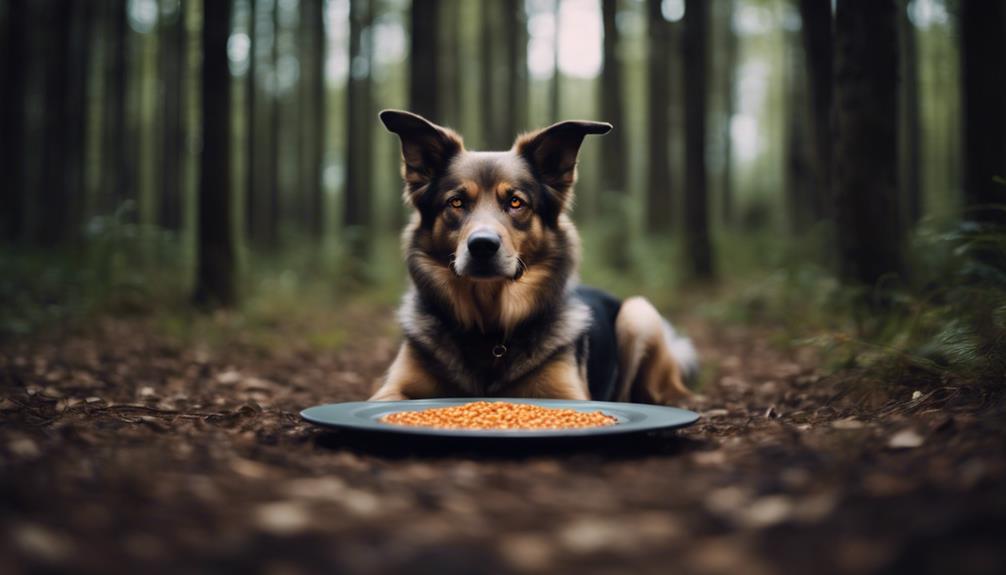
A balanced diet plays a crucial role in preserving and enhancing a dog's overall visual health and abilities, particularly in low-light conditions. Providing a well-rounded diet rich in essential nutrients is vital for maintaining optimal eye function in dogs. Nutrients such as zinc, lutein, beta-carotene, and omega-3 fatty acids are known to contribute to eye health and can help support a dog's vision, especially in dimly lit environments.
Adequate levels of these key nutrients can aid in preventing vision-related issues and promoting better visual acuity in dogs. By ensuring that your dog receives a balanced and nutritious diet, you can help safeguard their eyesight and improve their ability to see in the dark.
Essential Nutrients for Eye Health
To optimize a dog's visual health and support their ability to see in low-light conditions, ensuring they receive essential nutrients crucial for eye health is paramount.
- Zinc: Supports overall eye health and aids in the production of melanin, which protects the eyes.
- Lutein: Helps filter harmful light and protects the eyes from oxidative damage.
- Beta-carotene: Precursor to Vitamin A, essential for good vision and eye health.
- Omega-3s: Reduce inflammation in the eyes and support optimal eye function.
Insights From Veterinary Ophthalmologists
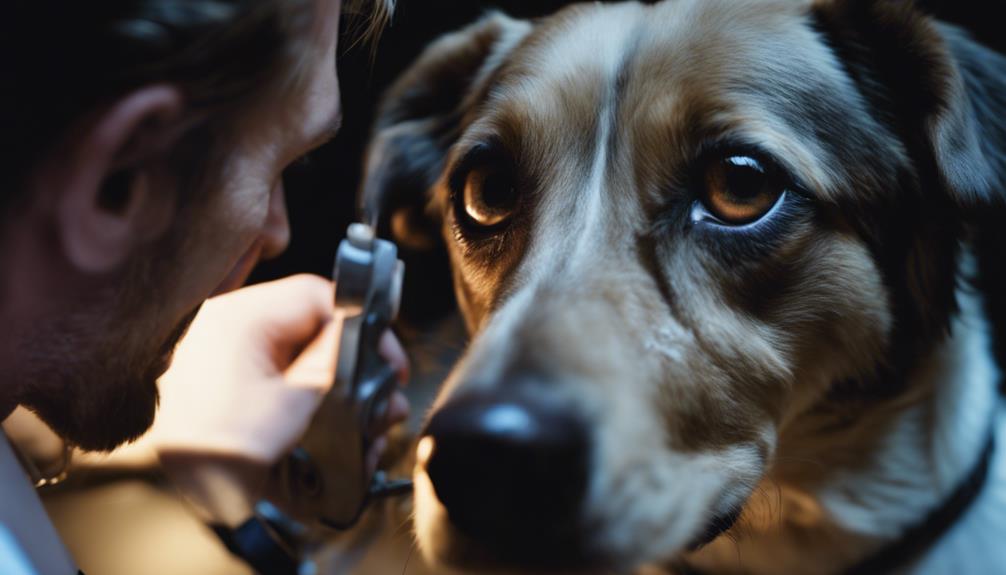
Veterinary ophthalmologists provide invaluable expertise on the visual health and capabilities of dogs, shedding light on the intricacies of their vision in various lighting conditions.
These specialists play a crucial role in diagnosing and treating eye conditions that can impact a dog's vision, such as cataracts or retinal degeneration.
By conducting thorough eye exams and utilizing advanced diagnostic tools, veterinary ophthalmologists can assess a dog's visual acuity, color perception, and ability to see in low-light environments.
Their insights help dog owners understand the unique visual abilities and potential limitations of their canine companions, guiding them in providing optimal eye care and enhancing their pets' overall quality of life.
Exploring Animal Vision Variations
With a focus on understanding the diverse ways in which animals perceive the world visually, this exploration delves into the variations in vision capabilities across different species.
- Some animals have a wider range of colors they can perceive compared to humans.
- Certain species have specialized vision for detecting ultraviolet light.
- Predatory animals often possess exceptional depth perception for hunting.
- Nocturnal creatures like owls have evolved to see well in low-light conditions.
Conclusion
In conclusion, the remarkable adaptations in a dog's ocular anatomy and function allow them to possess superior night vision capabilities compared to humans.
Their unique retinal composition, pupil size, and binocular vision contribute to their ability to navigate and perceive their surroundings in low-light conditions.
By understanding the factors influencing a dog's vision and providing essential nutrients through a balanced diet, we can optimize and maintain their eyesight for a better quality of life.




